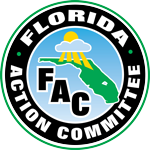United States Sentencing Commission: Child Pornography: Non-Production Offenses
Just released is the United States Sentencing Commission June 2021 report, “Federal Sentencing of Child Pornography: Non-Production Offenses“.
The last time the USSC issued a report on CP sentencing was in 2012, so this updated report is 9 years in the making. As with all news, we want to bring it to you as soon as we learn of it, so we are sharing the full report without the opportunity to digest the full 90+ pages, but we will add commentary in the comments and ask that you do as well.
One of the most important parts of this report is a section on recidivism (if you want a snapshot, there is a pie chart on page 65). Based on a three-year study of non-production CP offenders released in 2015 only 4.3% re-offended. Four point three percent. That is the statistic. From that number, we know that the risk of sexual re offending goes down even further. The risk of sexual recidivism decreases substantially the longer individuals remained sex offense–free in the community. (Hanson, R. K., Harris, J. R., Helmus, L., & Thornton, D. High risk offenders may not be high risk forever. Journal of Interpersonal Violence.2013). That study (the Hanson study) found that even the most high-risk sexual offenders rate of re offense fell to less than 1% per year when they have been offense free for 10 years or more.
I call out this 4.3% statistic and the pie chart, because some people will look at the USSC report and claim a 27.6% recidivism rate, but it is critical to note that “for this study, “recidivism” includes any arrest that led to a conviction for a felony or qualifying misdemeanor offense, an arrest with no evidence of an acquittal or dismissal; or a reported “technical” violation of the conditions of an offender’s probation or supervised release. In other words; Overall recidivism includes a technical violation such as an unknowing failure to register or accidentally forgetting your GPS box on a bus. Rules that no other ex-offender has to follow. For example; 7.3% of the 27.6% (more than one quarter) were arrested for a failure to register.
Actual sexual offense (which is what most people would first think of when they hear of a “sex offender re-offending”) is something the US Sentencing commission literally referred to as “infrequent” (literally… see the bottom of page 65). That’s a far cry from Legislative findings contained in Florida Statute 943.0435(12), which states, sexual offenders “often pose a high risk of engaging in sexual offenses even after being released from incarceration or commitment.” Hmmm… “Often” and “Infrequent” are not the same.
Sentencing Commission 20210629_Non-Production-CP

Goes back to, they can’t win by telling the truth, so they lie and use a tech violation to pad the numbers and make it appear we have a higher rate than actuality. In the 30 years since my incident, I have not had so much as a parking ticket.
Law enforcement, the courts and the other side would say “That is just because you haven’t been caught yet”. I agree, we haven’t yet been caught in your web of lies and fake compliance checks where we forget to sign a piece of paper. That for sure is worth 20 or so years in prison right?
I can see the headline now “Breaking News: Dangerous sex offender finally caught after 20 years” …………….After he/she didn’t update their car tag information. The same thing with these complaince check sweeps.
Out of 100 people they checked on, maybe 3 arrests, and of those, two were technical violations having nothing to do with a sex offense. AND they would not be a crime for anyone NOT on the registry. Punishment? I’d say so.
What does FAC think about this?